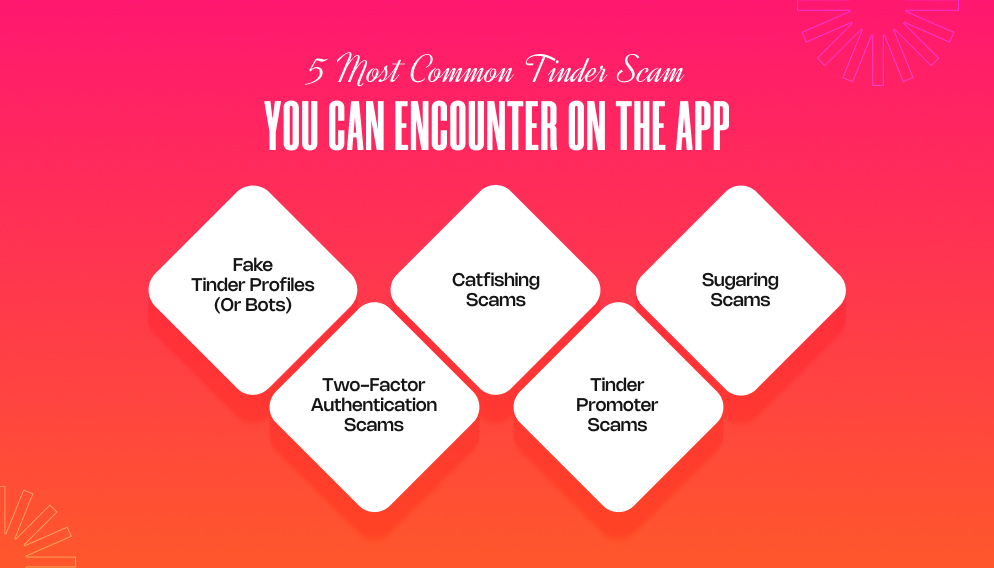The problem with finding love on a dating app is the risk factor. There’s always a major risk – what if he turns out to be a creep? What if he ghosts me…right after I get used to chatting with him? What if he is a fraud?
Moreover, heartbreaks are not the worst that you can face on your quest for finding love on Tinder. What if your date ends up stealing money from you? Yes, I can deal with ten heartbreaks, but not be subjected to Tinder scams. And ladies, these scams are super popular!
In fact, Times of India reported last year how McAfee did a study that discovered how 39% of potential love interests online turned out to be scammers. What’s more interesting is that this percentage includes a significant number of AI-generated bots and fake profiles.
See, why do we HAVE to think like this? No choice, really.
On that note, I did an experiment. I spoke to 50 women on Tinder and other dating apps about their experience with a heavy focus on scams. And what I found out completely changed how I’ve been looking at Tinder with rose-tinted glasses.
Yes, and I had to share my findings with all of you – stay tuned! This will change how you look at Tinder!
5 MOST Common Tinder Scams You Can Encounter On The App

While Tinder scams are very common, here are the five most common scams that you are most likely to encounter on the dating app.
Also, please note that I spoke to 50 women who have been actively using Tinder and other dating apps for the past three years. It was so surprising to find out that so many different people – be it age or career – have had similar experiences on this dating app.
Based on my one-on-one interviews, here’s what I discovered.
1. Fake Tinder Profiles (Or Bots)
Fake or bot Tinder profiles are typically controlled by some software, and not a real person. Yes! Scammers can literally use advanced programming to distribute malware on a large scale via fake links, fraudulent profiles on social media, and malicious websites.
For instance, bots might ask you to chat with them on Alloned, a website that has been previously used by bots for infecting targeted devices and apps with malware.
Moreover, bots spread a type of malware that can be used for stealing passwords, spying on devices, and more. So, if you are texting with someone on the dating app and their responses appear to be overly enthusiastic or very general, chances are you are chatting with a bot. Also, if the person chatting with you misinterprets your texts frequently, then it could be a bot as well.
In addition, it is possible to spot certain warning signs from quickly glancing at a profile.
- Do the pictures appear to be heavily edited?
- Is the bio very generic?
These are all signs that you are talking to a fake or bot profile.
2. Two-Factor Authentication Scams
2FA or two-factor authentication is a process for verifying a user’s identity before logging into any account. As a result, the platform that you will try to access will text or email you an OTP (one-time password) to use with your account password to verify your identity before logging into the said account.
Now, some scammers might use Tinder as a space to gain your trust since they already have your password and username to hack into your account. So, they might ask you if they can send you an OTP to your email ID or share the code with them due to an emergency.
The point is to never share any code that has been sent to your device by a stranger. It can get very difficult to actually regain control over your account. Moreover, if a scammer is able to access your banking information, it could also cause identity theft or something worse.
3. Catfishing Scams
Real people with fake accounts – people with photos of other people – are catfishers. These are strangers or even someone you might know from your personal life. Moreover, catfishing scams are also called romance scams since these scammers typically use romance as a disguise for tricking their targets.
They will either scam you for money or blackmail you with pictures or shared personal information.
In addition, there are people who catfish others due to insecurity or loneliness without the intention of scamming them. However, this is relatively less common. So, it is best to verify people’s identities always through video calls or meetings in public spaces. Don’t start building relationships with strangers if you are not sure about their real identity.
The signs are always clear – if they are hesitant to meet you in person or their pictures are just too good, chances are they are catfishing you.
4. Tinder Promoter Scams
Promoters are basically people who are hired by bars, restaurants, and clubs to bring in more customers. So, they typically operate on socials, but at times, they end up on dating apps as well.
So, even though it is annoying, this is one of the least harmful Tinder scams.
This is because promoters on Tinder are not typically into hacking your account or scamming you directly for money. Instead, they just want you to hit the bar that has hired them and buy a few drinks.
Having said that, it is still somewhat hurtful that you will try to build a connection with a person whose only interest is to use you to fill a space. So, the biggest warning sign is that they are insistent about meeting a certain spot.
5. Sugaring Scams
Sugaring is basically getting involved with a sugar baby who is typically paid for going to dates and events with their sugar daddy (or mommy). However, this is one of the smartest Tinder scams I’ve ever come across.
However, in these scams, people are starting to impersonate other people online or just pretending to be seeking a sugar baby.
From here on, the scam begins to work like one of those bounce cheque scams! This make-believe sugar daddy will send a hefty cheque and then request you to send some money back to them.
Sadly, the hefty cheque will bounce – the scammer will have some of the money without losing a penny.
So, the logic is simple: don’t send money to anyone you don’t know well. In fact, if someone puts in effort to make a scam believable, then they might take you to lucrative dinners and earn your trust before scamming you.
The MOST Common Warning Signs Of Tinder Scams
It is best to be cautious when you are on a dating website or app. I spoke to 50 women who are actively using dating apps about the most common warning signs of Tinder scams. Drawing from that, here’s a list of the most common warning signs:
- Heavily edited or photoshopped photos.
- No images with friends.
- Immediate responses.
- Sends confusing or weird messages.
- Sends calendar invites, surveys, and links.
- Avoids meeting in person.
- Moves into a relationship very quickly without meeting.
- Asks you for money or a code.
- Wants you to meet somewhere very specific.
- Shares personal information inconsistently.
- Asks for inappropriate information or illicit photos from you.
So, whenever you feel confused or doubtful, it is best to meet them in person – but just ensure you are meeting in public for safety. Of course, there are scammers who will target you even after meeting in-person, but a vast majority tends to avoid meeting up.
Now, if you do come across a rare case where the scammer meets you in person but it still feels like a suspicious situation, you can try to verify what you already know about them. Also, you can try to meet their friends as well.
On that note, it is always safe to follow some preventive measures when you are meeting someone for the first time.
- Meeting at public spots (ALWAYS)!
- Ensure at least one friend knows where you are going (and with whom).
- Arrange your transportation while going and coming back.
And always, always, always trust your gut! It doesn’t matter whether you are meeting someone in-person or just chatting online. If you are unsure about someone’s authenticity then there must be a logical reason you have been feeling that way. And it is just better to move on…
ADDITIONAL READING:
- The SAFEST Tinder Sex Guide For Women (It Always Works For ME)
- Can You Send Pictures On Tinder? The Safest Guide On The Internet!
- Does Tinder Notify Screenshots? The Truth Behind Tinder’s Privacy Policy!








